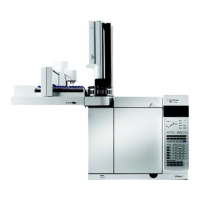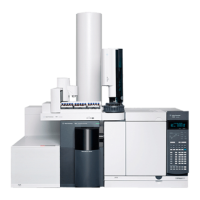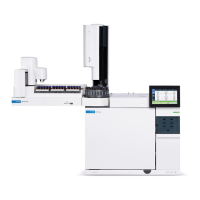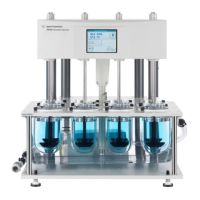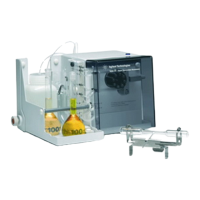Chromatographic Symptoms 3
Agilent 7890 Series Troubleshooting 65
Sensitivity
If the ECD is in the “good” signal range and sensitivity is the
issue, the problems quite likely may be in the inlet or column.
Consider the following issues:
1 If using an inlet with split and splitless modes, verify that the
mode has not changed and that the split valve is functioning.
This can be done by verifying that there is a corresponding
change in the response by making split and then splitless
injection, all other method parameters remaining the same.
If using split mode, verify the split flow using a flow meter.
2 Check all flow rates. See “Measuring FID, TCD, uECD, and
FPD flows”.
Typical ECD Life Cycle Stages:
Stage 1: New cell
Background = 100 Hz. Cell meets Agilent signal-to-noise (S/N) standard.
Stage 2: 6 months – 1 year
Background = 180 Hz. Increased response.
Stage 3: 1–2 years
Background = 350 Hz. More response, increasing noise, lower S/N.
Stage 4: 2–4 years
Background > 500 Hz. Noisy baseline, negative peaks. Thermal cleaning required.
Stage 5: 4–10 years
Background > 1000 Hz. Huge response. Very noisy, cell contaminated. Requires cell exchange.
Figure 3 Typical ECD life cycle
12 3 4 5

